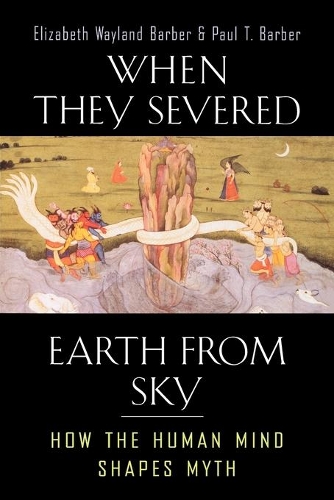
When They Severed Earth from Sky: How the Human Mind Shapes Myth
(Paperback)
Publishing Details
When They Severed Earth from Sky: How the Human Mind Shapes Myth
By (Author) Elizabeth Wayland Barber
By (author) Paul T. Barber
Princeton University Press
Princeton University Press
4th December 2006
United States
Classifications
General
Non Fiction
201.3
Physical Properties
Paperback
312
Width 152mm, Height 235mm
425g
Description
Why were Prometheus and Loki envisioned as chained to rocks What was the Golden Calf Why are mirrors believed to carry bad luck How could anyone think that mortals like Perseus, Beowulf, and St. George actually fought dragons, since dragons don't exist Strange though they sound, however, these "myths" did not begin as fiction. This absorbing book shows that myths originally transmitted real information about real events and observations, preserving the information sometimes for millennia within nonliterate societies. Geologists' interpretations of how a volcanic cataclysm long ago created Oregon's Crater Lake, for example, is echoed point for point in the local myth of its origin. The Klamath tribe saw it happen and passed down the story--for nearly 8,000 years. We, however, have been literate so long that we've forgotten how myths encode reality. Recent studies of how our brains work, applied to a wide range of data from the Pacific Northwest to ancient Egypt to modern stories reported in newspapers, have helped the Barbers deduce the characteristic principles by which such tales both develop and degrade through time.Myth is in fact a quite reasonable way to convey important messages orally over many generations--although reasoning back to the original events is possible only under rather specific conditions. Our oldest written records date to 5,200 years ago, but we have been speaking and mythmaking for perhaps 100,000. This groundbreaking book points the way to restoring some of that lost history and teaching us about human storytelling.
Reviews
"The authors provide not only a compelling and highly readable collection of mythic interpretations but also a framework through which to decode those stories and uncover seismic, geological, astrological, or other natural events that preceded written history... When They Severed Earth from Sky provides an intellectually challenging and parsimonious new framework. It not only sheds light on the planet's natural history but also offers alluring insights about human cognition."--Abigail A. Baird, Science "In their highly engaging, thoroughly researched analysis of the meaning of myths, When They Severed Earth from Sky, [the authors] build a strong case that historical facts can be extracted from the mists of our mythic past... I think the Barbers are on to something here. Any student of myths ignores this important work at his or her peril."--Michael Shermer, American Scientist "The Barbers take us back some 100,000 years to the beginning of storytelling... When They Severed Earth from Sky is timely and engaging."--Books in Canada
Author Bio
Elizabeth Wayland Barber, Professor of Linguistics and Archaeology at Occidental College, is the author of "The Mummies of Urumchi" (W. W. Norton), "Women's Work" (W. W. Norton), and "Prehistoric Textiles" (Princeton). Paul T. Barber, a research associate with the Fowler Museum of Cultural History at the University of California, Los Angeles, is the author of "Vampires, Burial, and Death" (Yale).
